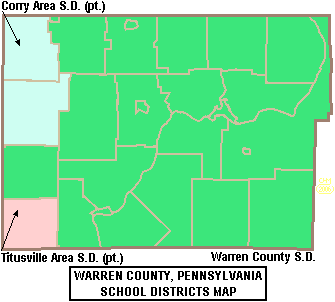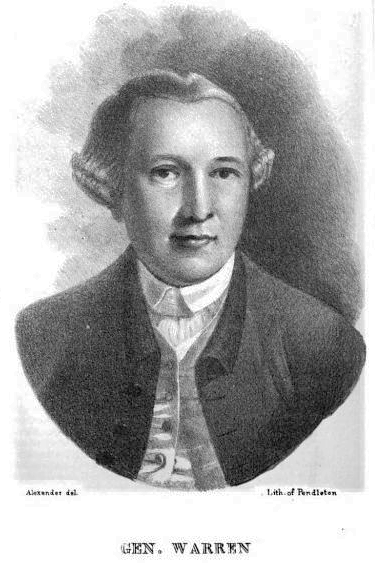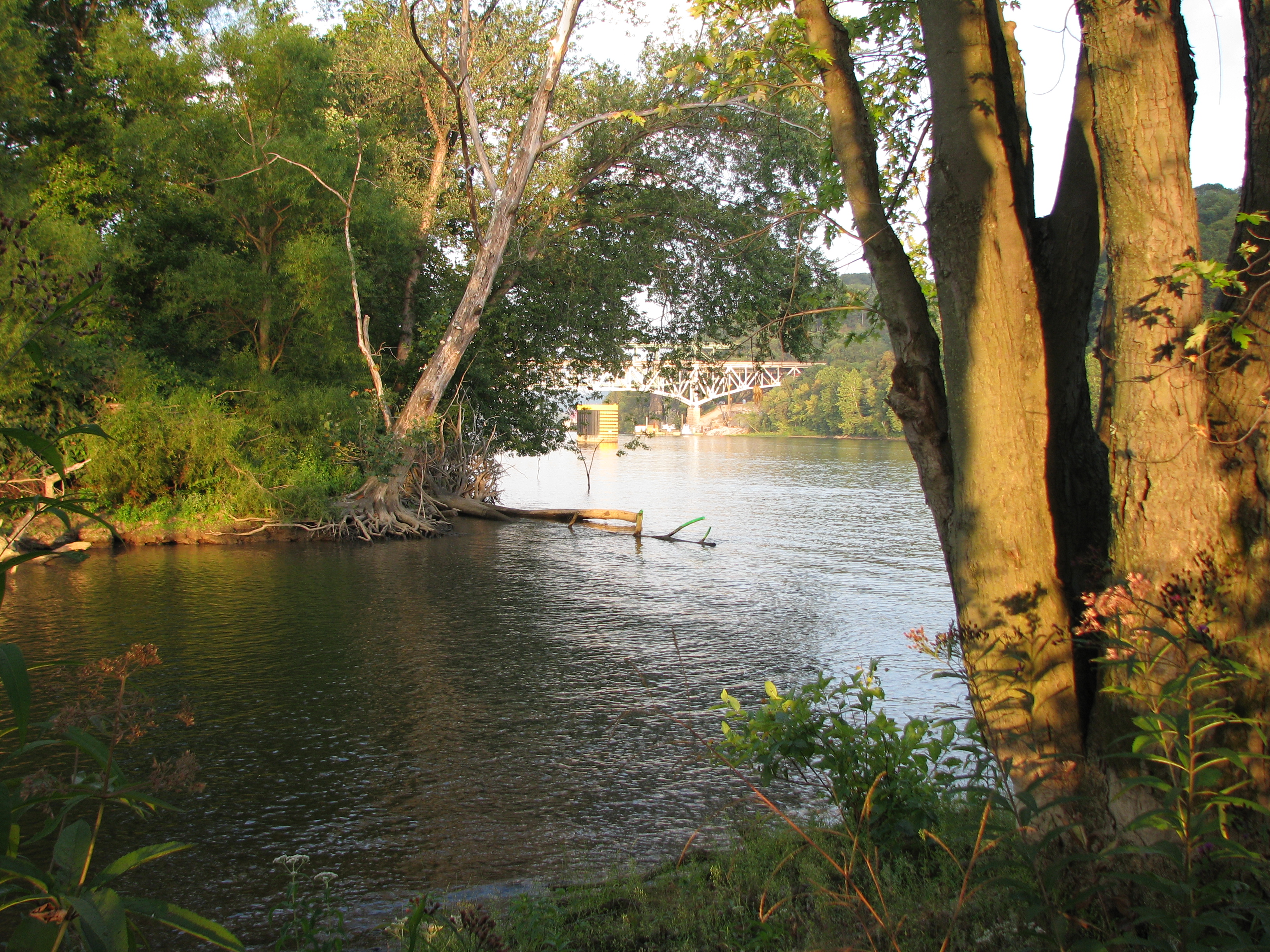|
Warren County, Pennsylvania
Warren County is a county in the Commonwealth of Pennsylvania. As of the 2020 census, the population was 38,587. Its county seat is Warren. The county was established in 1800 from parts of Allegheny and Lycoming counties; attached to Crawford County until 1805 and then to Venango County until Warren was formally established in 1819. Warren County makes up the Warren, Pennsylvania micropolitan statistical area. The county is part of the North Central Pennsylvania region of the state. Geography According to the U.S. Census Bureau, the county has a total area of , of which is land and (1.6%) is water. Notable physical features include the Allegheny River, the Allegheny Reservoir, the Kinzua Dam, and the Allegheny National Forest. Climate Warren county has a warm-summer humid continental climate (''Dfb'') and average temperatures in the city of Warren range from 24.5 °F in January to 69.3 °F in July. Adjacent counties * Chautauqua County, New York (north ... [...More Info...] [...Related Items...] OR: [Wikipedia] [Google] [Baidu] |
Joseph Warren
Joseph Warren (June 11, 1741 – June 17, 1775), a Founding Father of the United States, was an American physician who was one of the most important figures in the Patriot (American Revolution), Patriot movement in Boston, Massachusetts, Boston during the early days of the American Revolution, eventually serving as President of the revolutionary Massachusetts Provincial Congress. Warren enlisted Paul Revere and William Dawes on April 18, 1775, to leave Boston and spread the alarm that the British garrison in Boston was setting out to raid the town of Concord, Massachusetts, Concord and arrest rebel leaders John Hancock and Samuel Adams. Warren had been commissioned a major general in the colony's militia shortly before the June 17, 1775 Battle of Bunker Hill. Rather than exercise his rank, Warren chose to participate in the battle as a private (military), private soldier, and was killed in combat when British troops stormed the redoubt atop Breed's Hill. His death, immortali ... [...More Info...] [...Related Items...] OR: [Wikipedia] [Google] [Baidu] |
Humid Continental Climate
A humid continental climate is a climatic region defined by Russo-German climatologist Wladimir Köppen in 1900, typified by four distinct seasons and large seasonal temperature differences, with warm to hot (and often humid) summers, and cold (sometimes severely cold in the northern areas) and snowy winters. Precipitation is usually distributed throughout the year, but often these regions do have dry seasons. The definition of this climate in terms of temperature is as follows: the mean temperature of the coldest month must be below or depending on the isotherm, and there must be at least four months whose mean temperatures are at or above . In addition, the location in question must not be semi-arid or arid. The cooler ''Dfb'', ''Dwb'', and ''Dsb'' subtypes are also known as hemiboreal climates. Although amount of snowfall is not a factor used in defining the humid continental climate, snow during the winter in this type of climate is almost a guarantee, either intermitte ... [...More Info...] [...Related Items...] OR: [Wikipedia] [Google] [Baidu] |
United States Office Of Management And Budget
The Office of Management and Budget (OMB) is the largest office within the Executive Office of the President of the United States (EOP). The office's most prominent function is to produce the president's budget, while it also examines agency programs, policies, and procedures to see whether they comply with the president's policies and coordinates inter-agency policy initiatives. Russell Vought is the current director of the OMB since February 2025. History The Bureau of the Budget, OMB's predecessor, was established in 1921 as a part of the United States Department of the Treasury, Department of the Treasury by the Budget and Accounting Act of 1921, which President Warren G. Harding signed into law. The Bureau of the Budget was moved to the Executive Office of the President of the United States, Executive Office of the President in 1939 and was run by Harold D. Smith during the government's rapid expansion of spending during World War II. James L. Sundquist, a staffer at the B ... [...More Info...] [...Related Items...] OR: [Wikipedia] [Google] [Baidu] |
Hearts Content National Scenic Area
Hearts Content National Scenic Area is a tract of old-growth forest in Warren County, northwestern Pennsylvania. It represents one of the few remaining old-growth forests in the northeastern United States that contain white pine. The area is protected as a National Scenic Area within the Allegheny National Forest. History While many of the region's forests were being clear-cut, the Wheeler and Dusenbury Lumber Company held the tract of old-growth forest at Heart's Content from 1897 until 1922, when they deeded it to the United States Forest Service. In 1934, the Chief of the Forest Service recognized the old-growth stand and of surrounding land as a National Scenic Area. The forest became a National Natural Landmark in 1973. Scientific study H.J. Lutz's 1930 study of Hearts Content was one of the earliest quantitative analyses of plant communities in an old-growth forest, and it remains influential in the field of ecology. Lutz concluded that the even-aged white pine stand ... [...More Info...] [...Related Items...] OR: [Wikipedia] [Google] [Baidu] |
Old-growth Forest
An old-growth forest or primary forest is a forest that has developed over a long period of time without disturbance. Due to this, old-growth forests exhibit unique ecological features. The Food and Agriculture Organization of the United Nations defines primary forests as naturally regenerated forests of native tree species where there are no clearly visible indications of human activity and the ecological processes are not significantly disturbed. One-third (34 percent) of the world's forests are primary forests. Old-growth features include diverse tree-related structures that provide diverse wildlife habitats that increases the biodiversity of the forested ecosystem. Virgin or first-growth forests are old-growth forests that have never been logged. The concept of diverse tree structure includes multi-layered canopies and canopy gaps, greatly varying tree heights and diameters, and diverse tree species and classes and sizes of woody debris., the world has of primary forest ... [...More Info...] [...Related Items...] OR: [Wikipedia] [Google] [Baidu] |
Clarendon, Pennsylvania
Clarendon is a borough in Warren County, Pennsylvania, United States. The population was 450 at the 2010 census. Geography Clarendon is located at (41.781091, -79.095090). According to the United States Census Bureau, the borough has a total area of , all land. Demographics As of the census of 2000, there were 564 people, 220 households, and 150 families residing in the borough. The population density was . There were 239 housing units at an average density of . The racial makeup of the borough was 97.52% White, 0.18% Native American, 1.06% Asian, and 1.24% from two or more races. Hispanic or Latino of any race were 1.06% of the population. There were 220 households, out of which 32.7% had children under the age of 18 living with them, 55.9% were married couples living together, 8.6% had a female householder with no husband present, and 31.8% were non-families. 26.8% of all households were made up of individuals, and 15.5% had someone living alone who was 65 years of a ... [...More Info...] [...Related Items...] OR: [Wikipedia] [Google] [Baidu] |
Chapman State Park
Chapman State Park is a Pennsylvania state park in Pleasant Township, Warren County, Pennsylvania near Clarendon, in the United States. The man-made Chapman Lake covers of the park. Chapman State Park is named in honor of Dr. Leroy E. Chapman. Dr. Chapman was a state senator from 1929 until 1963. He was part of several civic groups that pushed for the creation of a state park in Warren County. Chapman State Park, opened in 1951, is adjacent to Allegheny National Forest and State Game Land 29 just off U.S. Route 6. Recreation Chapman State Park is open for year-round recreation. Chapman Lake is open for swimming, boating, and fishing. A large picnic area is near the beach and overlooks the lake. Five pavilions are available by reservation or first-come, first-served. A rustic, wooded campground is open mid-April through mid-December. of trails are open to hiking. Chapman State Park is also open to hunting and fishing in the streams as well as the lake. The park stays o ... [...More Info...] [...Related Items...] OR: [Wikipedia] [Google] [Baidu] |
List Of Pennsylvania State Parks
, there are 124 state parks in the U.S. state of Pennsylvania. The Pennsylvania Bureau of State Parks, a division of the Pennsylvania Department of Conservation and Natural Resources (DCNR), is the governing body for all these parks, and directly operates 116 of them. The remaining parks are operated in cooperation with other public and private organizations. The first Pennsylvania state park, at Valley Forge, opened in 1893 and was given to the National Park Service (NPS) for the United States Bicentennial in 1976. There are a total of seventeen former Pennsylvania state parks: four former parks have been transferred to the NPS, four to the Pennsylvania Historical Museum Commission, two to the U.S. Army Corps of Engineers, one to both the Corps and the Pennsylvania Game Commission, five to the Pennsylvania Bureau of Forestry, and one has ceased to exist. Nine current and two former state parks have had major name changes or have been known under alternate names. The li ... [...More Info...] [...Related Items...] OR: [Wikipedia] [Google] [Baidu] |
Allegheny National Recreation Area
The Allegheny National Recreation Area is a national recreation area of the United States, located on the Allegheny Plateau in northwestern Pennsylvania. It is administered by the United States Forest Service as part of the Allegheny National Forest. Geography The recreation area consists of on three separate parcels of land within the forest. It was established under the Pennsylvania Wilderness Act of 1984, by Congressman Bill Clinger, Senator Arlen Specter, and Senator John Heinz. The national recreation area is divided into two units, one around Allegheny Reservoir upstream from Kinzua Dam, and another to the south of Warren on the east bank of the Allegheny River The Allegheny River ( ; ; ) is a tributary of the Ohio River that is located in western Pennsylvania and New York (state), New York in the United States. It runs from its headwaters just below the middle of Pennsylvania's northern border, nor .... Allegheny National Recreation Area was established by t ... [...More Info...] [...Related Items...] OR: [Wikipedia] [Google] [Baidu] |
Erie County, Pennsylvania
Erie County is the northernmost county in the Commonwealth of Pennsylvania. As of the 2020 census, the population was 270,876. Its county seat is Erie. The county was created in 1800 and later organized in 1803. The county is part of the Northwest region of the commonwealth. History Erie County was established on March 12, 1800, from part of Allegheny County, which absorbed the lands of the disputed Erie Triangle in 1792. Prior to 1792, the region was claimed by both New York and Pennsylvania and so no county demarcations were made until the federal government intervened. Other states have also tried to bid for the Erie Triangle but ultimately Pennsylvania purchased it and it was ceded to Pennsylvania. Since Erie County and its newly established neighboring Counties of Crawford, Mercer, Venango, and Warren were initially unable to sustain themselves, a five-county administrative organization was established at Crawford County's Meadville to temporarily manage government ... [...More Info...] [...Related Items...] OR: [Wikipedia] [Google] [Baidu] |
Forest County, Pennsylvania
Forest County is a county in the Commonwealth of Pennsylvania. As of the 2020 census, the population was 6,973, making it the third-least populous county in Pennsylvania. Its county seat is Tionesta. The county was created in 1848 and later organized in 1857. The county is part of the North Central region of the commonwealth. History Forest County was created on April 11, 1848, from part of Jefferson County. The county was enlarged on October 31, 1866, when part of Venango County was incorporated into the county. Forest County was named for the forests contained within its limits. Geography According to the U.S. Census Bureau, the county has a total area of , of which is land and (0.8%) is water. It has a warm-summer humid continental climate (''Dfb'') and average monthly temperatures in Tionesta range from 25.3 °F in January to 69.8 °F in July. Adjacent counties * Warren County (north) * McKean County (northeast) * Elk County (east) * Jefferson County (sou ... [...More Info...] [...Related Items...] OR: [Wikipedia] [Google] [Baidu] |
Elk County, Pennsylvania
Elk County is a county in the Commonwealth of Pennsylvania. As of the 2020 United States census, the population was 30,990. Its county seat is Ridgway. The county was created on April 18, 1843, from parts of Jefferson, Clearfield, and McKean Counties. Elk County is named for the now-extinct eastern elk (''Cervus canadensis'') that historically inhabited the region. The county is part of the North Central region of the commonwealth. The county is notable for having one of the highest concentrations of Roman Catholics in the United States, with 69% of the county's residents identifying as Catholic. Geography Elk County consists of low rolling hills, carved by frequent drainages and heavily wooded. According to the United States Census Bureau, the county has a total area of , of which is land and (0.6%) is water. Elk has a warm-summer humid continental climate (''Dfb'') and average monthly temperatures in Ridgway range from 23.2 °F in January to 67.4 °F in J ... [...More Info...] [...Related Items...] OR: [Wikipedia] [Google] [Baidu] |





